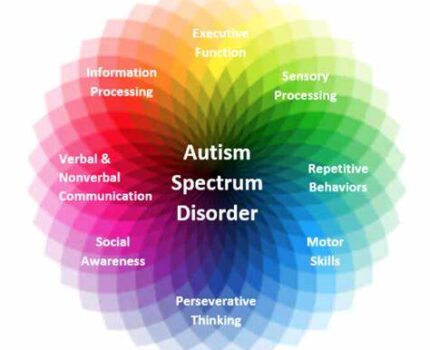
Autism Spectrum Disorder (ASD) is a complex neurodevelopmental condition characterized by unique differences in behavior, communication, and sensory processing, tied to variations in the nervous system’s structure and function. For my STEAM project, I explored how autism impacted brain connectivity, sensory processing, and neurotransmitter functions. This project held personal significance as I sought to better understand the experiences of my four-year-old son, who has autism. Using principles from Unit 6, Nervous System, I examined brain anatomy and sensory pathways, creating a Play-Doh model to illustrate these concepts.
In my art piece, I used different colors of Play-Doh to represent various regions of the nervous system and how autism affects them. Each region was modeled to highlight its unique role in sensory, cognitive, and emotional processing and the challenges that individuals with autism may experience.
Brain Connectivity in Autism
Neurological differences in autism often manifest as both hyperconnectivity and hypoconnectivity in various brain regions. For example, the prefrontal cortex, responsible for decision-making and social interaction, exhibited altered function in autism, leading to challenges in adapting behavior in social contexts. Similarly, the corpus callosum, which facilitates communication between the brain’s hemispheres, often displayed reduced connectivity, affecting the integration of information (Gomez & Flores, 2020).
Sensory Processing in Autism
Sensory processing differences are a hallmark of autism. Many individuals with autism experience heightened or diminished responses to sensory stimuli, linked to atypical functioning in sensory pathways. For example, the parietal lobe, critical for sensory processing and spatial awareness, exhibited differences that often result in heightened or reduced sensory sensitivities. Additionally, the occipital lobe, responsible for visual processing, showed heightened activity in many individuals with autism, which may explain their strong focus on visual details.
These sensory challenges often trigger heightened autonomic responses, such as fight-or-flight reactions, leading to sensory overload or avoidance behaviors (Van Den Boogert et al., 2021). I used textures and colors in my project to illustrate sensory pathways and how sensory information is processed differently in autism.
Neurotransmitter Function in Autism
Neurotransmitter differences, particularly involving dopamine, serotonin, and gamma-aminobutyric acid (GABA), influence mood, behavior, and sensory processing in autism. For instance, the basal ganglia, which is involved in movement and habit formation, often exhibits abnormalities in autism, potentially contributing to repetitive behaviors and difficulty transitioning between tasks. Research suggests that physical activity can improve neurotransmitter balance and help individuals regulate sensory input (Ahmed et al., 2024).
This project deepened my understanding of how autism affects the nervous system, focusing on brain connectivity, sensory processing, and neurotransmitter functions. By creating a visual model, I made these complex concepts accessible, gaining valuable insights into my son’s experiences while appreciating the diversity of the human brain. Understanding these differences also emphasized the importance of developing strategies and interventions to support individuals with autism in their daily lives.
Works Cited
Ahmed, M. M., Amin, W. M., Alajam, R. A., Morsy, W. E., Fayed, E., Youssef, A. S. A., Mohamed, A. A., & Alawna, M. (2024). Immediate effect of physical activity on the autonomic nervous system in individuals with autism spectrum disorders of different age groups: A randomised trial. BMJ Open Sport and Exercise Medicine, 10(2). https://doi.org/10.1136/bmjsem-2023-001822
Gomez, I. N., & Flores, J. G. (2020). Diverse patterns of autonomic nervous system response to sensory stimuli among children with autism. Current Developmental Disorders Reports, 7(4), 249–257.
Van Den Boogert, F., Sizoo, B., Spaan, P., Tolstra, S., Bouman, Y. H., Hoogendijk, W. J., & Roza, S. J. (2021). Sensory processing and aggressive behavior in adults with autism spectrum disorder. Brain Sciences, 11(1), 95.
Yanai, T., Yoshida, S., & Kawakami, K. (2024). The association between children’s autism spectrum disorders and central nervous system infections: Using a nationwide claims database. Journal of Autism and Developmental Disorders. https://doi.org/10.1007/s10803-024-06327-0
Work in-progress:


